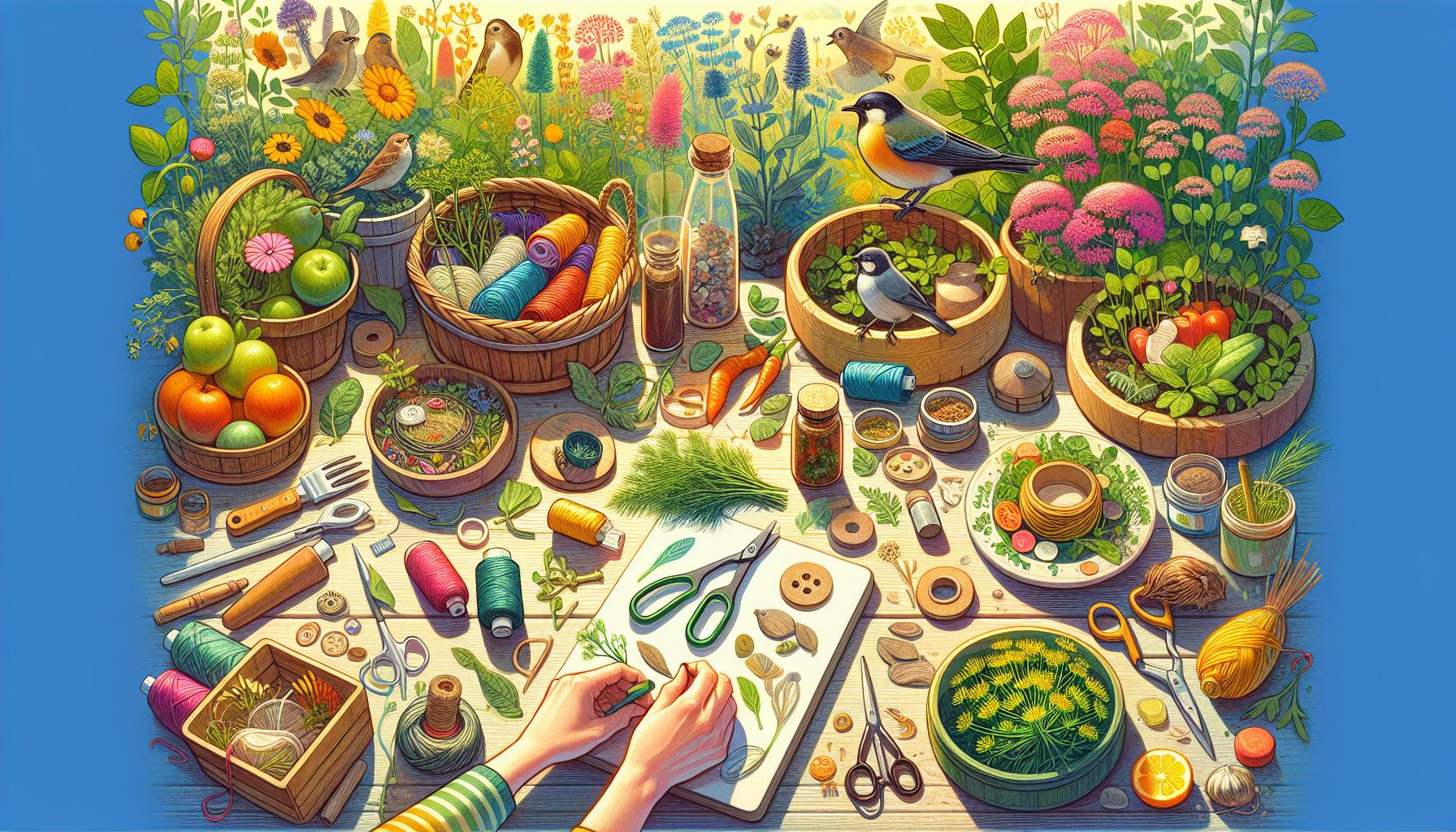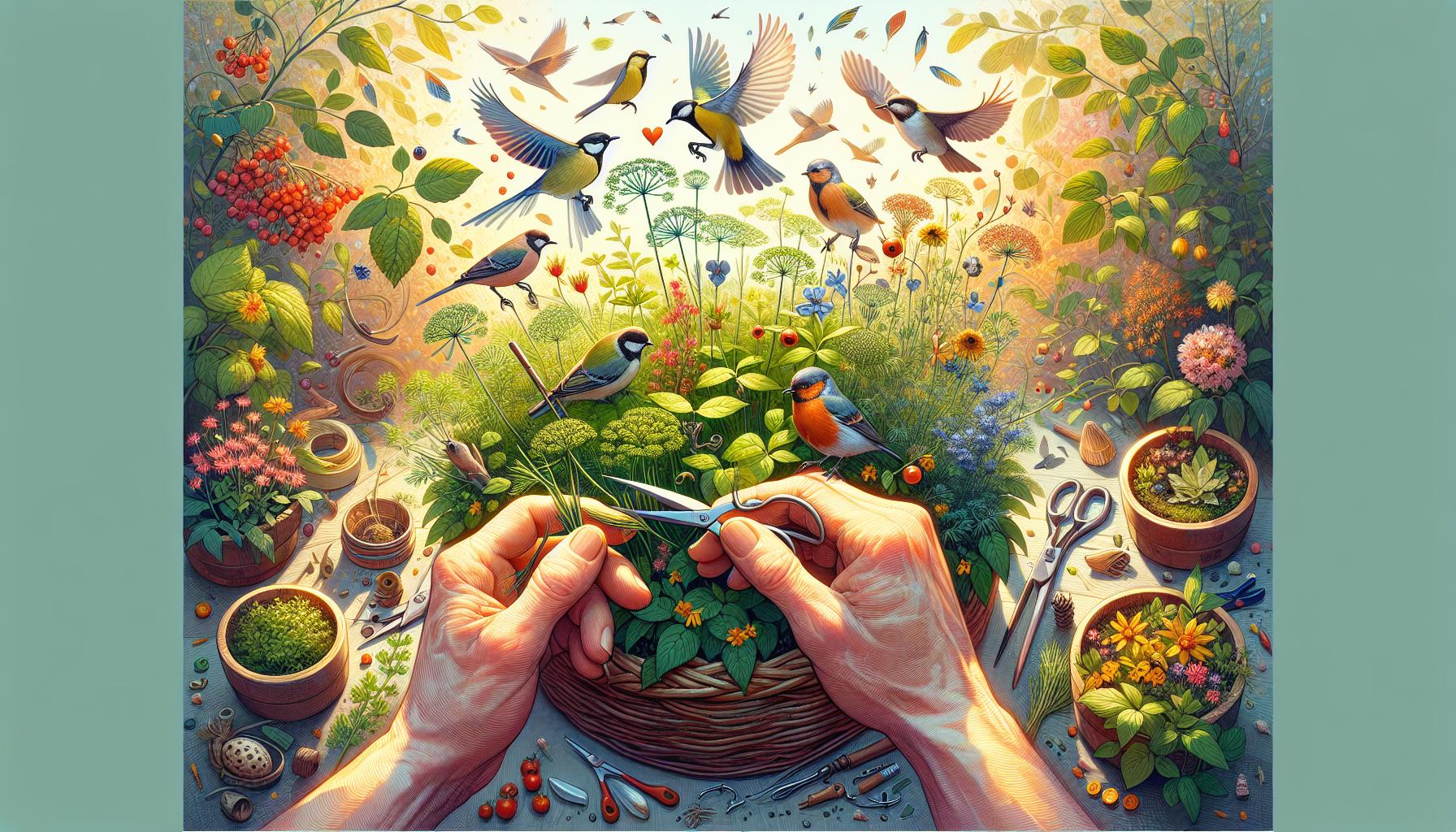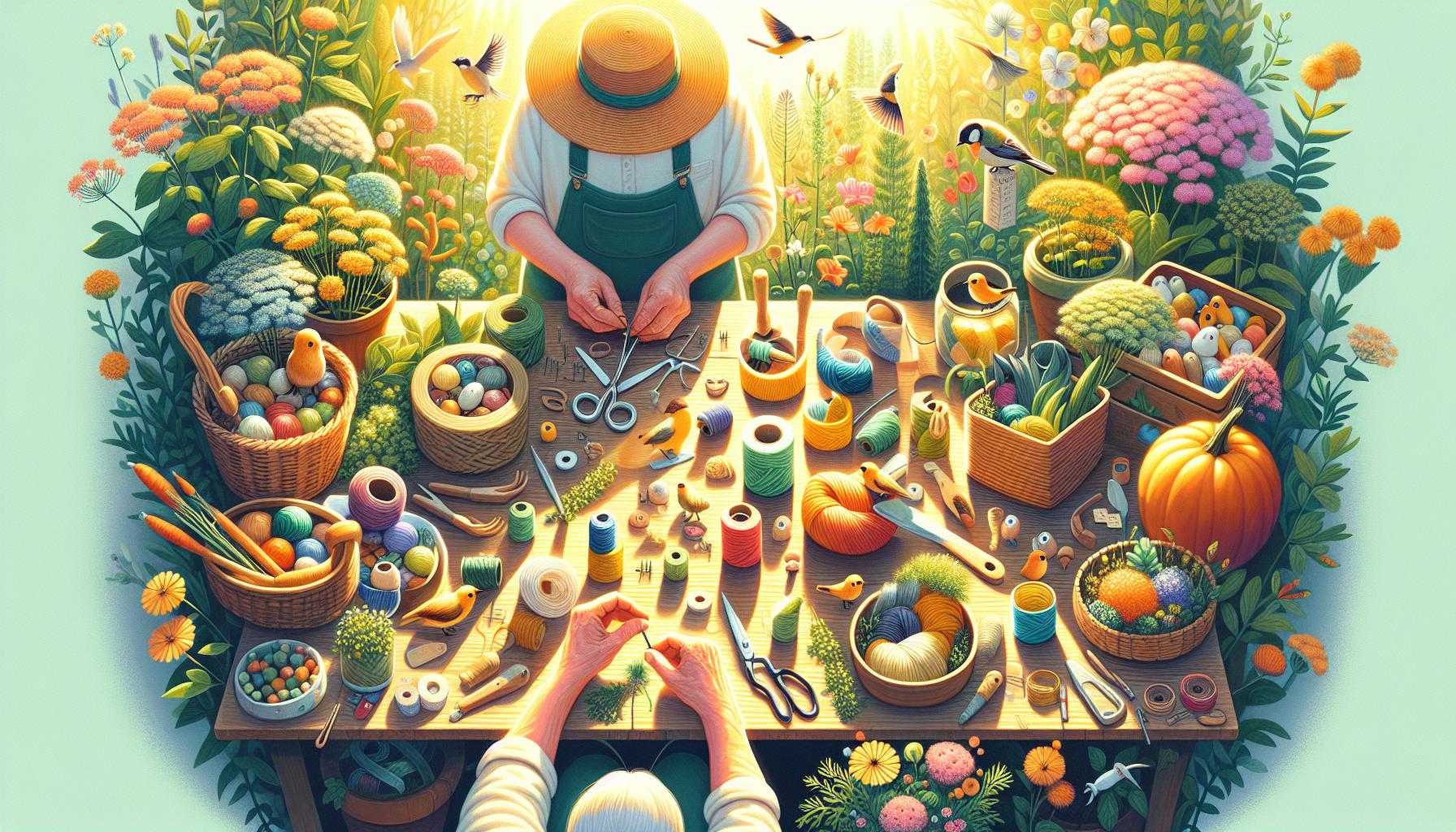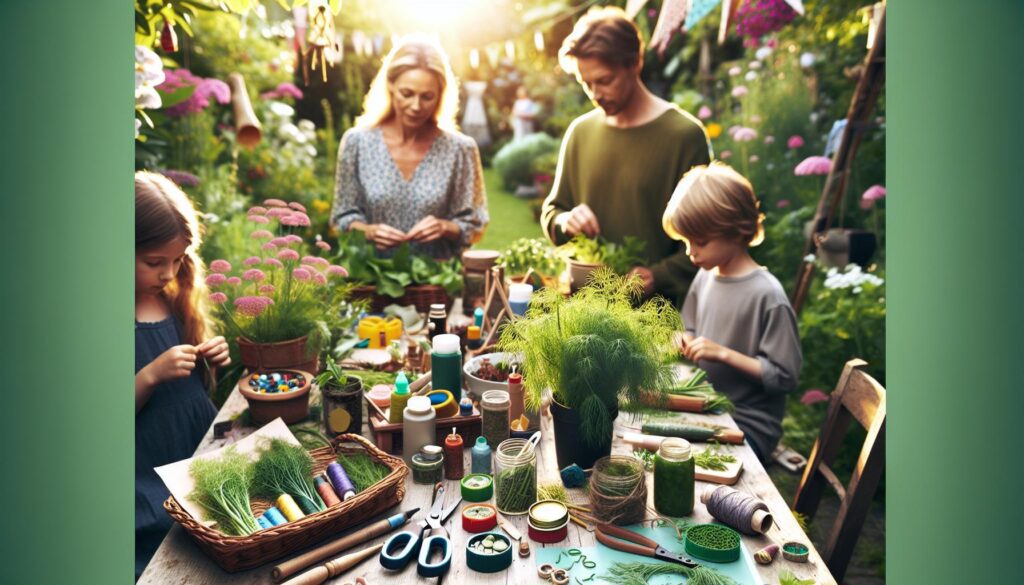Harvest Dill Like a Pro: Tips for Fresh Herbs
Are you tired of bland dishes that scream for a flavor upgrade? Dive into the delightful world of dill and unlock the secret to transforming your meals from “meh” to magnificent. In “Harvest Dill like a Pro: Tips for Fresh Herbs,” we’re here to equip you with all the know-how to elevate your culinary game, one snip at a time. Imagine plucking fresh, fragrant dill right from your garden or windowsill—it’s the herb equivalent of finding a $20 bill in an old pair of jeans! With our expert tips, you’ll learn not just how to harvest dill, but how to become the herb whisperer of your neighborhood. So, grab your scissors and let’s get ready to make your dishes sing!
Understanding the Growth Cycle of Dill for Optimal Harvesting
To harvest dill at its peak, it’s essential to understand its growth cycle. Dill is typically sown directly into the garden soil in early spring, as it thrives in cool temperatures. The plant progresses through distinct stages, from germination to maturity, taking approximately 40 to 60 days to reach full growth. Observing the leaves is crucial; distinct feathery fronds appear first, followed by flowering stalks that signify the plant is nearing its peak flavor. Notably, harvesting just before the flowers begin to open captures dill’s bold flavor, providing the richest taste for your culinary needs.
For optimal harvesting, timing and technique are key. Consider the following tips to ensure you get the most from your dill:
- Look for the right size: Harvest when the stalks are about 12 to 18 inches tall.
- Cut with care: Use sharp scissors or pruning shears to cut the stems, ensuring clean cuts to promote healthy growth.
- Leave some behind: Always leave a few fronds on the plant to allow for continued growth and a second harvest.
| Growth Stage | Approximate Duration |
|---|---|
| Germination | 7-14 days |
| Vegetative Growth | 30-40 days |
| Flowering & Seed Formation | 10-15 days |

Identifying the Right Time to Harvest Dill for Maximum Flavor
Harvesting dill at the right moment is essential for maximizing its flavor and ensuring the best culinary experience. Generally, the prime time to harvest your dill is when the plant reaches about 6 to 12 inches in height. You should look for leaves that are radiant green and fragrant, as this indicates peak potency. It’s also worth noting that the best flavor can be found just before the plant begins to flower. Once blooming starts, the plant’s energy shifts towards producing seeds instead of foliage, which can result in a milder taste. Pay attention to the following signs for optimal harvesting:
- Leaf Size: harvest when the leaves are fully formed but still tender.
- Color: Choose vibrant green leaves for the strongest flavor.
- Flower Buds: If you see flower buds forming, it’s a good time to cut back to encourage leaf growth.
To properly harvest your dill, use sharp scissors or shears to snip off the leaves or stems. Aim for the outer leaves, as this method encourages the plant to continue growing. If you prefer to collect seeds, wait until the flower heads have dried on the stem, then shake them into a container. For a clearer understanding of the process, refer to the following table:
| Harvest Stage | Flavor Profile | Best Use |
|---|---|---|
| Pre-Flowering | intense and aromatic | Fresh use in recipes |
| During Bloom | Moderate and less aromatic | infusions or garnish |
| Post-Bloom (Seeds) | Earthy and nutty | Spice in cooking |

Essential Tools and Techniques for Effective Dill Harvesting
To ensure a successful dill harvest, it’s vital to equip yourself with the right tools. Begin with a sharp pair of scissors or garden shears, which will allow you to make clean cuts, minimizing damage to the plant. Also, consider using gloves to protect your hands, especially if you’re harvesting large quantities. A basket or cloth bag is excellent for collecting your harvest, ensuring the delicate leaves don’t get crushed during transportation. Lastly, a harvest knife can be invaluable if you’re working in larger patches, providing an efficient way to take down several stalks at once.
Alongside the right tools, mastering a few essential techniques can greatly enhance your harvesting experience. Always aim to cut dill in the early morning or late afternoon when the plants are the most hydrated; this helps preserve their longevity. Additionally, remember to harvest from the top down, taking only the outer leaves and stems first to encourage further growth. It’s good practice to leave some stems intact, which will allow the plant to continue producing fresh foliage. If you intend to dry or store your dill, do consider techniques like air drying or using a dehydrator, as they help maintain the herb’s vibrant color and flavor for longer periods.
Proper Methods for Cutting and Storing Fresh dill
When cutting fresh dill, it’s essential to use sharp scissors or garden shears to ensure a clean cut, which helps preserve the quality of the herb. Start by removing the outer stems, which are typically the oldest and may not have the best flavor.Aim to cut about one-third of the foliage from each plant, allowing it to continue growing. For the best flavor, harvest in the morning after the dew has dried but before the sun is at its peak. This timing ensures that the essential oils, responsible for dill’s distinctive taste, are at their highest concentration.
After harvesting, proper storage methods can considerably extend the lifespan of fresh dill. Consider choosing one of the following methods:
- Refrigeration: Place the dill in a damp paper towel and store it in a sealed plastic bag in the refrigerator.
- Freezing: Chop the dill and mix it with a little water or oil before freezing in ice cube trays. Once frozen, transfer the cubes to a freezer bag.
- Drying: Hang small bunches upside down in a dark, dry place to air dry, or use a food dehydrator for quicker results.
For those who like to monitor how fresh herbs maintain their flavor, here’s a brief comparison of the expected shelf life using various methods:
| Method | Shelf Life |
|---|---|
| refrigeration | 1-2 weeks |
| Freezing | 3-6 months |
| Drying | 6-12 months |

Maintaining Dill Plants for Continuous Harvest Throughout the Season
To enjoy a steady supply of fresh dill throughout the growing season, regular maintenance and harvesting techniques are essential. begin by ensuring your dill plants are well-spaced to promote air circulation and reduce the chance of disease. A good rule of thumb is to space them at least 12 inches apart. Water your dill plants consistently, using deep watering techniques to encourage robust root progress. Keep the soil slightly moist but avoid waterlogging, as dill prefers well-drained conditions. Fertilization with a balanced, organic fertilizer every few weeks can also enhance growth and resilience.
When it comes to harvesting, the key is to trim the plants without uprooting them, which fosters continuous growth. Utilize the following techniques for optimal results:
- Harvest Early: Start cutting leaves when they reach 6 inches in height.
- Cut Judiciously: Remove outer stems and leaves, allowing the central stem to continue growing.
- Formative cuts: Trim about a third of the plant at a time to prevent shock and promote regeneration.
Also, consider succession planting to stagger your harvest.By sowing new dill seeds every few weeks, you can cultivate a continuous supply. This not only maximizes your yield but also helps prevent the plants from going to seed prematurely, which can alter flavor and reduce harvestable foliage.

Common Mistakes to Avoid When Harvesting Dill
When it comes to harvesting dill, there are several common mistakes that can hinder the quality and yield of your herbs. One frequent misstep is harvesting too late. Dill is best picked when the leaves are vibrant and fresh, typically before the plant flowers. Waiting too long can result in tougher, bitter leaves and diminished flavor, so aim to cut the stems early in the day when the plants are still full of moisture. Additionally, be cautious not to remove more than one-third of the plant at a time; this allows for regrowth and prolongs the harvesting season.
another mistake to be wary of is neglecting proper tools. Using dull scissors or knives can crush the delicate stems, leading to bruising and a compromised flavor. Equip yourself with sharp shears designed for herb harvesting to ensure clean cuts. Moreover,avoid harvesting during wet conditions; excess moisture can lead to mold and spoilage. Cultivate a habit of checking the weather before you head out to harvest, and always allow the leaves to dry before storing. By sidestepping these pitfalls, you’ll ensure a bountiful dill harvest that maintains its delicious, aromatic qualities.
Exploring Culinary Uses and Pairings for Freshly Harvested Dill
Dill, with its feathery fronds and distinctive flavor, offers a delightful way to elevate a variety of dishes.Weather you’re preparing fish, salads, or dips, freshly harvested dill can enhance the dish’s aroma and taste. This herb is especially celebrated in Greek yogurt sauces and tzatziki, where its fresh notes provide a refreshing contrast to rich flavors. To explore its versatility further, consider using dill in spreads and dressings, where it pairs beautifully with ingredients like cream cheese, cucumbers, and lemon, imparting a lightness that is perfect for summer meals.
When it comes to pairings, dill thrives alongside flavors that are equally vibrant yet complementary. It seamlessly fits into Mediterranean dishes,enhancing roasted vegetables,potato salads,and seafood preparations. The following table illustrates some classic ingredients that pair harmoniously with freshly harvested dill:
| Ingredient | Pairing Effect |
|---|---|
| Salmon | Enhances freshness |
| Cucumber | Adds crunch and brightness |
| Potatoes | Brings out earthiness |
| Lemon | Balances richness |
Moreover, consider integrating dill into marinades and brines, where its aromatic qualities can penetrate through food, enriching your dishes with complex flavors. Its unique taste works notably well in pickling, making homemade dill pickles a sought-after delicacy. As you experiment with your culinary creations, keep in mind that the key to unlocking dill’s full potential lies in the freshness of the herb itself. Use it liberally, and let your creativity flourish in the kitchen!
Tips for Preserving Dill for Long-Term Enjoyment
To savor the vibrant flavor of dill long after your harvest, consider several effective preservation methods. Freezing is one of the simplest techniques: wash fresh dill, chop it, and pack it into ice cube trays. Fill the trays with water or olive oil, then freeze.Once solid, transfer the dill cubes to a freezer bag for speedy access. Drying is another great option; you can hang small bundles of dill upside down in a cool, dark place until fully dry. For a quicker approach,use a dehydrator or an oven set to a low temperature. Once dried,store the crumbled dill in an airtight container away from direct sunlight to maintain its flavor.
Additionally, oil infusions allow you to capture the essence of dill in a versatile form. By combining chopped dill with olive oil and simmering gently, you create a flavorful infusion perfect for salad dressings or marinades. After cooling, strain and store the oil in a glass jar in the refrigerator. for those who prefer a pickled option,consider making dill-infused pickles or a quick pickle solution with vinegar,sugar,and water. Here’s a simple comparison of these methods:
| Preservation Method | Flavor Retention | Storage Duration |
|---|---|---|
| Freezing | Excellent | Up to 6 months |
| Drying | Good | 1 year or more |
| Oil Infusion | Very Good | 2-3 weeks in the fridge |
| Pickling | very Good | Up to 1 year |
Q&A
What is the best time to harvest dill for optimal flavor?
The ideal time to harvest dill is when the plant reaches a height of about 6 to 12 inches and before it flowers. Typically, this stage occurs around 8 to 10 weeks after sowing. The flavor of dill is strongest in its younger leaves, which are often referred to as fronds. If you wait too long and let the plant flower, you’ll notice a shift in taste as the plant’s energy shifts from leaf production to flowering and seed production.Additionally,the leaves may become tougher and less flavorful.
To ensure you’re harvesting at the right time, observe the fronds closely. When they are vibrant green and lush, that’s when they are at their peak. Regularly harvesting leaves encourages the plant to produce more foliage, resulting in a richer and more abundant crop. If you find your dill plant starting to bolt or flower, simply cut off the flowering stems to redirect the plant’s energy back into leaf production for a more prolonged harvest.
How should I harvest dill without damaging the plant?
To harvest dill effectively without harming the plant, it’s essential to use the right technique. One effective method is to use sharp kitchen scissors or garden snips. Start by cutting the dill fronds just above a leaf node. This helps ensure that the plant can continue to grow and produce new leaves.Avoid pulling the entire plant out or cutting it back too severely, as this can lead to stunted growth or even plant death.
Moreover, it’s meaningful to harvest only one-third of the plant at a time. This conserves energy for the dill, ensuring it remains healthy and continues to flourish. Regular gentle harvesting not only supports the plant’s health but can also boost the flavor profile of your future harvests. For exmaple, if you’re aiming to use dill in cooking or garnishing, regularly sampling the plant will help you understand its changing flavors throughout the growing season.
What are the best practices for storing harvested dill?
Once you’ve successfully harvested your dill, storage practices become crucial to maintaining its freshness and flavor. If you plan to use the dill within a few days, simply place your freshly cut fronds in a glass of water like a bouquet and cover them loosely with a plastic bag. This will allow them to continue to breathe while keeping them hydrated. Store this arrangement in the refrigerator, and your dill can last for about a week.
For longer-term storage,consider freezing your dill.Start by washing and drying the fronds thoroughly. You can chop them, then spread them out on a baking sheet to freeze individually, or place them in an ice cube tray with water or oil to create flavorful ice cubes. Once frozen, transfer the cubes or chopped dill into airtight containers, which can last in the freezer for several months while retaining their flavor. This method preserves the herb beautifully, allowing you to enjoy the taste of fresh dill long after its growing season.
Can I use dill flowers in cooking?
Absolutely! Dill flowers, also known as dill umbels, are edible and can add a unique flavor to various dishes. These flowers have a milder taste compared to the leaves and can be incorporated into salads, pickles, and even as garnishes for dishes. Using dill flowers not only enhances the presentation but also diversifies the flavor profile of your meals.
When using dill flowers, it’s best to harvest them just before they fully bloom for the freshest flavor. A popular culinary practice is to add dill flowers to homemade pickles, providing a distinctive taste that pairs well with cucumbers. Additionally, adding them to herb blends or infusing oils can impart a subtle dill flavor. Always ensure that the flowers are washed gently to remove dirt and potential pests before use.
How often can dill be harvested during the growing season?
Dill can be harvested multiple times during its growing season, typically every two to three weeks. As a fast-growing herb, it responds well to regular harvesting, which not only provides you with fresh herbs but also encourages the plant to grow more vigorously. When you snip away the top fronds,you stimulate new leaf production,leading to a more abundant supply.
Monitoring your dill plant is key to effective harvesting. If you notice the fronds starting to look sparse or leggy, it’s a signal that they may be ready for a trim. Aim to keep an eye on the size and health of your plant; harvesting small amounts regularly allows you to enjoy dill’s fresh flavors throughout the growing season while extending the life of your plants.
What pests or diseases should I watch out for when growing dill?
When cultivating dill, it’s important to be aware of potential pests and diseases that can affect the plant’s health. Aphids are among the most common pests,frequently enough found clustering on the undersides of leaves.They suck the sap from the plant, which can lead to stunted growth and yellowing leaves. Regular inspection and the introduction of beneficial insects like ladybugs can help manage aphid populations naturally.
Additionally, dill can be susceptible to fungal diseases, such as powdery mildew, especially in humid conditions. To prevent this, ensure proper spacing between your plants to promote air circulation and avoid overhead watering, which can create a damp environment conducive to fungal growth. If powdery mildew does occur, remove affected leaves and apply a suitable fungicide if necessary. Taking these preventive measures will help you maintain healthy dill plants and enjoy an abundant harvest.
Key Takeaways
mastering the art of harvesting dill not only enhances your culinary creations but also contributes to a lasting gardening practice. By following the tips outlined above—timing your harvest correctly, using the right tools, and employing proper drying techniques—you can ensure that your dill remains flavorful and aromatic. Remember, fresh herbs like dill are at their peak when harvested thoughtfully, allowing you to enjoy the vibrant taste and health benefits they offer. Whether you’re sprinkling dill on a family recipe or incorporating it into gourmet dishes, your enhanced skills will undoubtedly elevate your cooking. So grab your shears, head to your garden, and start harvesting like a pro—you’ll soon discover the joy of using fresh herbs at their finest! Happy gardening!



